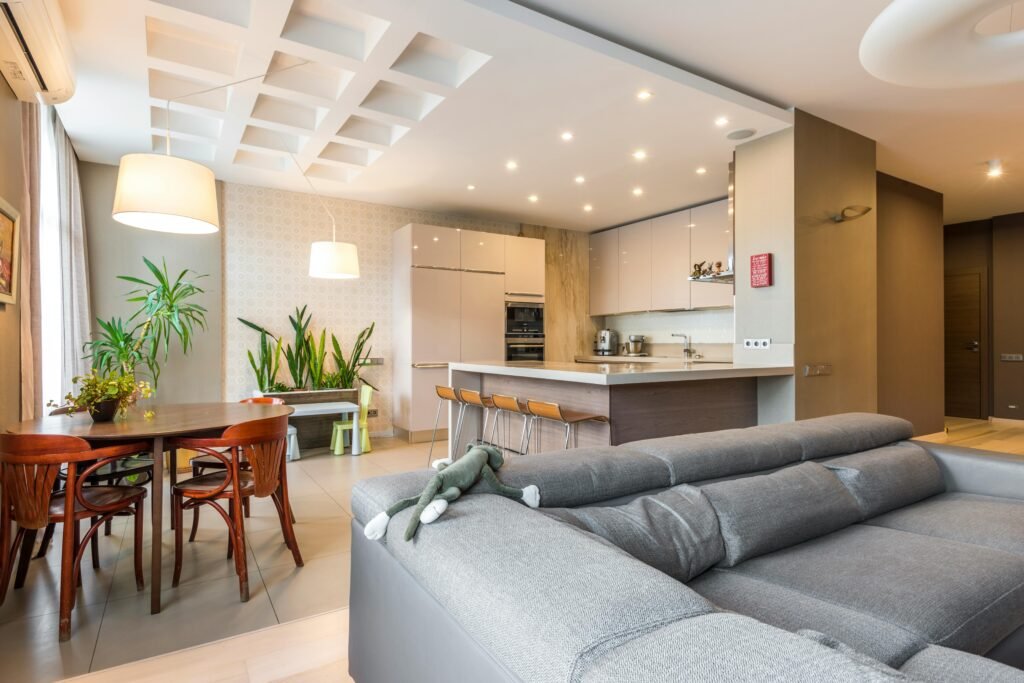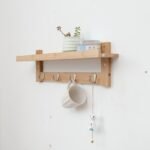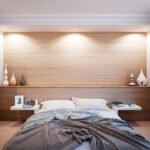After fourteen years in furniture retail and interior design consulting, I’ve learned that choosing the best side tables for lamps and decorative plants goes far beyond matching styles and finding the right height – it’s about understanding how these dual-purpose pieces impact room functionality, lighting effectiveness, and plant health in ways that most homeowners never consider. What I’ve discovered is that most people approach side table selection based on aesthetic appeal alone without considering the complex interplay between furniture placement, lighting requirements, and plant care needs.
The reality is that the best side tables for lamps and decorative plants depend on factors that most furniture guides completely overlook: your specific lighting patterns, plant species requirements, electrical outlet locations, and daily usage habits around these surfaces. I’ve seen clients spend hundreds on beautiful tables that become plant graveyards or lighting disasters, and I’ve watched smart homeowners create thriving plant displays and perfect ambient lighting through strategic table choices. Here’s what actually matters when you’re investing in furniture that needs to serve both illumination and horticultural functions.
Height Optimization for Lamp Function and Plant Display
Look, the biggest mistake I see homeowners make is choosing side table heights based on sofa proportions without considering how height affects both lamp effectiveness and plant presentation. From my experience managing showroom displays and consulting on hundreds of living room arrangements, proper height relationships determine whether your lamps provide useful illumination and your plants receive adequate light exposure.
The best side tables for lamps and decorative plants must balance lamp shade positioning with plant display angles. What works is the 24-26 inch sweet spot that places lamp shades at optimal reading height while elevating plants to showcase their full form. I’ve seen gorgeous table lamps become useless because tables were too low, creating glare instead of ambient light. Similarly, beautiful plants get lost on tables that don’t provide proper elevation. The 80/20 rule applies here: 80% of satisfaction comes from getting heights right for both functions, not from premium materials or design details.
Surface Area Planning and Weight Distribution
Here’s what nobody talks about: the hidden space requirements for successfully combining lamps, plants, and daily-use items on side table surfaces without creating cluttered disasters. I’ve worked with clients whose beautiful side tables became unusable because they didn’t plan for the real estate that both lamps and plants require, plus the practical items that accumulate around seating areas.
The data tells us that effective lamp-and-plant combinations require minimum 18×24 inch surface areas to accommodate lamp bases, plant containers, and essential items like coasters or remotes. From a practical standpoint, this means the best side tables for lamps and decorative plants must offer adequate square footage without overwhelming room proportions. I once worked with a client who learned this lesson the hard way when their narrow console tables looked perfect but couldn’t accommodate both functions, forcing them to choose between lighting and greenery. Success requires honest assessment of everything these surfaces need to hold.
Material Durability and Moisture Management
The real question isn’t which side table looks most attractive – it’s which materials can handle the moisture, heat, and daily wear that lamp-and-plant combinations create over time. What I’ve learned is that combining electrical equipment with living plants creates unique environmental challenges that many table materials simply can’t withstand long-term.
During my years troubleshooting damaged furniture, I’ve seen water rings, heat damage, and electrical hazards from poorly planned lamp-plant arrangements. The best side tables for lamps and decorative plants incorporate moisture-resistant finishes, heat-tolerant surfaces, and drainage considerations that protect both the furniture and the electronics. Sealed wood finishes, glass tops, or synthetic materials often outperform natural wood in these applications. I’ve worked with families whose expensive hardwood tables required refinishing within two years because they didn’t consider the realities of combining plants with lighting. Quality home improvement resources like Pharmacy Paper often discuss similar material considerations for multi-functional furniture pieces.
Electrical Planning and Cord Management
During my years working with lighting installations, I’ve discovered that electrical accessibility impacts side table success more than most people realize. The reality is that lamp placement drives table positioning, but most homeowners choose table locations first and then struggle with power access and cord management that compromises both safety and aesthetics.
What works is reverse-planning from electrical outlets to determine optimal table placement, then selecting best side tables for lamps and decorative plants that accommodate cord routing without creating hazards or eyesores. Built-in cord management, strategic leg positioning that allows cord routing, and consideration of power strip placement prevent the tangled messes that plague poorly planned setups. I’ve seen beautiful room arrangements ruined by extension cords snaking across floors because nobody planned electrical access during the furniture selection process. Smart electrical planning should precede table shopping, not follow it.
Plant Species Compatibility and Care Integration
Here’s where I see most plant-lover decorators make costly mistakes: choosing plants based on appearance without considering how side table environments affect plant health and maintenance routines. The bottom line is that side tables create unique growing conditions – often near heat sources, in specific light conditions, and with limited drainage options – that many popular houseplants can’t tolerate.
From my experience helping clients troubleshoot dying plants on furniture, best side tables for lamps and decorative plants must accommodate plant care realities: drainage solutions that protect surfaces, spacing that allows air circulation around heat-generating lamps, and positioning that provides appropriate light levels for your chosen species. I’ve worked with families whose stunning plant displays became expensive maintenance headaches because they chose high-maintenance species for convenient furniture locations. Success requires matching plant selection to table environments, not forcing incompatible combinations. Modern plant care technology, similar to smart solutions discussed on platforms like Tech Vercit, can help monitor and optimize these challenging micro-environments.
Style Integration and Room Balance
The 80/20 rule applies powerfully here: 80% of side table success comes from how well the table integrates with existing room elements while serving its dual functions, not from following current trends or choosing the most expensive option. I’ve seen stunning tables become room problems because they were wrong for the space’s scale, style, or functional requirements.
Best side tables for lamps and decorative plants must balance their own design presence with room proportions while accommodating the visual weight of lamps and plants. What I’ve learned is that tables serving double duty often work better in neutral finishes that don’t compete with the decorative elements they support. I’ve worked with clients whose side tables successfully anchored room designs by providing stable platforms for rotating plant and lamp combinations rather than trying to be decorative focal points themselves. Smart table choices enhance rather than compete with the items they display.
Budget Allocation and Multi-Function Value
After helping dozens of homeowners optimize their furniture investments, what I’ve learned is that side tables serving both lamp and plant functions often provide exceptional value compared to single-purpose alternatives. The reality is that strategic side table investments can replace multiple furniture pieces while improving room functionality and aesthetics.
The best side tables for lamps and decorative plants typically fall in the $150-600 range where you get construction quality and design appeal without paying premiums for features that dual-purpose use doesn’t require. I’ve seen families achieve dramatic room transformations through well-chosen side tables that eliminated the need for separate plant stands, lamp tables, and storage pieces. What works is focusing budget on structural integrity and moisture resistance, then selecting designs that provide flexibility for different lamp and plant combinations. Investment thinking, similar to portfolio diversification strategies discussed on platforms like Crypto Paper, benefits from choosing versatile pieces that serve multiple functions well rather than specialized items with limited applications.
Long-Term Maintenance and Seasonal Adaptability
From a practical standpoint, most homeowners underestimate the ongoing maintenance requirements of lamp-plant combinations and fail to choose tables that accommodate seasonal changes in both lighting needs and plant care routines. The data shows that successful plant displays require periodic repositioning, seasonal plant rotation, and changing lighting patterns as daylight hours vary.
The best side tables for lamps and decorative plants accommodate these maintenance realities through designs that allow easy access for plant care, lamp cleaning, and seasonal rearrangements. What I’ve discovered is that homeowners who think strategically about long-term care – considering everything from repotting access to lamp bulb changes – maintain more attractive and functional arrangements with less stress. Quality tables should support evolving plant collections and changing lighting needs rather than locking you into static arrangements. I’ve worked with clients whose table choices successfully served through various plant phases and seasonal decorating changes because they prioritized adaptability and maintenance access from the beginning.
Choosing the right side tables for lamps and decorative plants comes down to balancing aesthetic desires with practical functionality, making decisions based on real-world usage patterns rather than showroom appeal. The best side tables for lamps and decorative plants deliver consistent support for both lighting and plant display while accommodating the maintenance and care requirements that keep both elements thriving.
What I’ve learned is that successful dual-purpose table selections prioritize appropriate sizing, material durability, and functional flexibility over trendy features or extreme budget constraints. The right tables become invisible infrastructure that supports your lighting and plant goals – they provide reliable platforms for both functions without demanding excessive attention or creating maintenance complications.
The thing is, side table choice affects both your room’s ambiance and your plant care success more than most people realize. Investing in the best side tables for lamps and decorative plants that match your specific needs and care capabilities pays dividends in enhanced daily experiences and thriving plant displays over many years. The right tables become trusted foundations for both beautiful lighting and successful plant parenthood.
What height side table works best for both table lamps and plant displays?
Tables measuring 24-26 inches high provide optimal lamp shade positioning for reading while elevating plants for proper display and light exposure. This height places lamp shades at eye level when seated and showcases plant architecture effectively without overwhelming room proportions or creating lighting glare issues.
How much surface area do I need for lamp and plant combinations?
Plan for minimum 18×24 inches to accommodate both lamp bases and plant containers plus essential items like coasters. Round tables need 20+ inch diameters for effective dual use. Consider both items’ footprints plus maintenance access space for plant care and lamp adjustments.
What materials work best for tables supporting plants and electrical equipment?
Moisture-resistant finishes, sealed woods, glass tops, or quality synthetic materials handle plant watering and lamp heat better than untreated natural wood. Look for materials that resist water rings, heat damage, and electrical hazards while maintaining appearance through regular plant maintenance routines.
Should I match my side table to existing furniture or let it coordinate?
Coordination works better than exact matching for dual-purpose tables since they support decorative elements that change seasonally. Choose tables that complement your room’s color scheme and style while providing neutral backgrounds that enhance rather than compete with plants and lamps.
How do I prevent my plants from interfering with lamp function?
Position plants to avoid blocking lamp light distribution and maintain adequate spacing around lamp bases for heat dissipation. Choose plant species appropriate for artificial light conditions and table heights that prevent plant growth from interfering with lamp shade positioning or cord access.







